Parasites - know your enemy
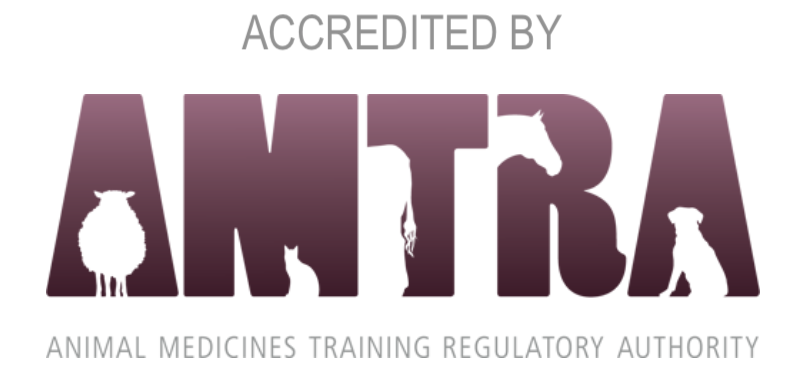
By Radley Edwards VetMB, MRCVS

All RAMAs/SQPs must earn a certain number of CPD points in a given period of time in order to retain their qualification. RAMAs/SQPs who read this feature and submit correct answers to the questions below will receive two CPD points.
Control of parasites is important for both animal and human health, and can be achieved through informed husbandry and the appropriate use of authorised veterinary medicines. But due to their tiny size, and the fact that some live inside their host, detection of parasites may go unnoticed by many dog owners. For this reason, it is important to discover as much as you can about the lifestyle of each dog, and understand the risk of exposure, to determine which authorised medication can effectively offer optimum parasite control.
ENDOPARASITES - PARASITES THAT LIVE INTERNALLY
Parasites that live inside dogs can be broadly grouped into two categories. Those that live mainly in the intestines, such as roundworms, hookworms and tapeworms, a number of which can be passed to human beings, or those that primarily reside elsewhere such as lungworm.
In most cases, regardless of the category, infected dogs will shed eggs and larvae in their faeces. Good husbandry can help break the cycle of re-infection and reduce environmental infection through prompt collection and removal of dog faeces as well as regular and frequent cleaning of dogs’ living spaces. Combining this with regular and effective worming treatment will lower the levels of infection present within the dog population, reducing environmental contamination and the risk to humans.
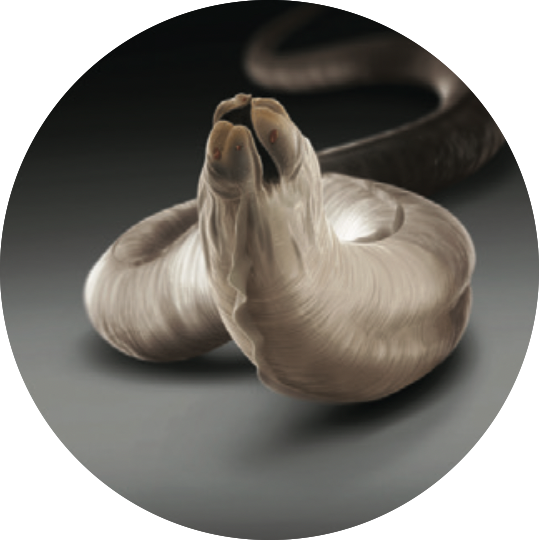
Roundworms (Toxocara canis) are the largest of the intestinal worms. Toxocara canis can cause disease in dogs, as well as foxes, and is also zoonotic so control is important for human health as well. Eggs passed by infected dogs can survive in the environment for many months. From here, they may be ingested directly by dogs, or by smaller mammals that are subsequently eaten by dogs. If dogs are defecating near crops, then it is possible these eggs will also be present on vegetation intended for human consumption. This is why it is important to draw owners’ attention to the importance of good personal hygiene, such as washing their hands and fresh produce, to prevent accidental infection.
Puppies can become infected with roundworms across the placenta in the last third of pregnancy and also after birth in the milk. Large burdens in young pups can cause severe disease. This should be avoided by treatment of bitches prior to birth, and both mother and puppies post whelping with an appropriate wormer, e.g. fenbendazole.
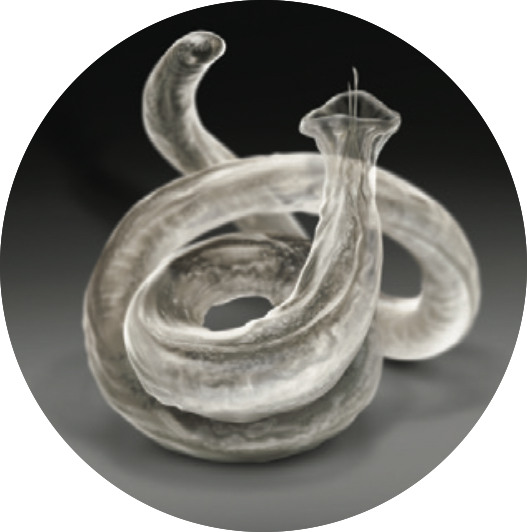
Commonly referred to as Lungworm, Angiostrongylus vasorum, is actually classified as a heartworm due to its lifecycle. Clinical signs of A.vasorum include respiratory problems such as a cough or breathing problems, but can also include bleeding disorders and in severe cases reports of sudden death without any symptoms at all. Dogs become infected by eating larvae present in snails, or other molluscs. Risk of catching Lungworm can be reduced by not leaving dog toys or food out overnight and avoiding the ingestion of molluscs. Routine treatment with appropriate macrocyclic lactones has been shown to be effective at preventing infections.
ECTOPARASITES - PARASITES THAT LIVE EXTERNALLY
As the weather gets warmer, grasses start to grow, wildlife becomes more active and people and their dogs tend to be out and about more. All of these conditions mean that dogs are more likely to be exposed to ectoparasites, particularly fleas and ticks.
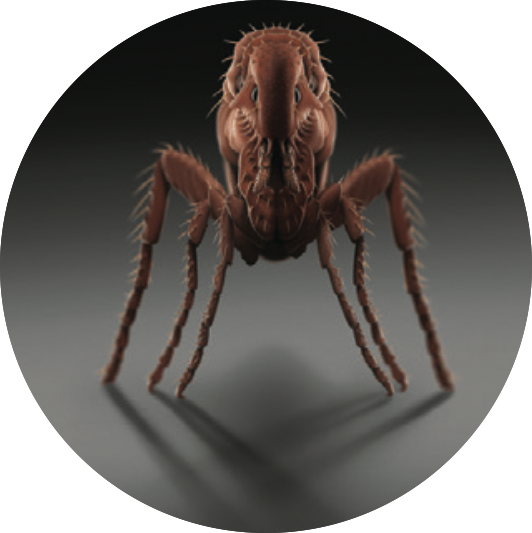
There are a number of different flea species, but the most common flea is the cat flea, Ctenocephalides felis. Despite its name, this flea can feed and reproduce on the blood of dogs as well as cats and wild mammals such as hedgehogs. Animals can become infected with adult fleas by close contact with other infected animals; however, 95% of the flea life cycle takes place off the host. Pupae in particular can survive for months in [living space] environments, and once hatched will be actively seeking a host to feed on.
As well as advising on treatment which is applied directly to the dog, household flea sprays should be recommended to help protect the home as part of an integrated flea control programme. Choose a household flea spray that has dual action, both an adulticide e.g. permethrin, as well as an insect growth regulator e.g. pyriproxyfen for ongoing control of the eggs and larvae.
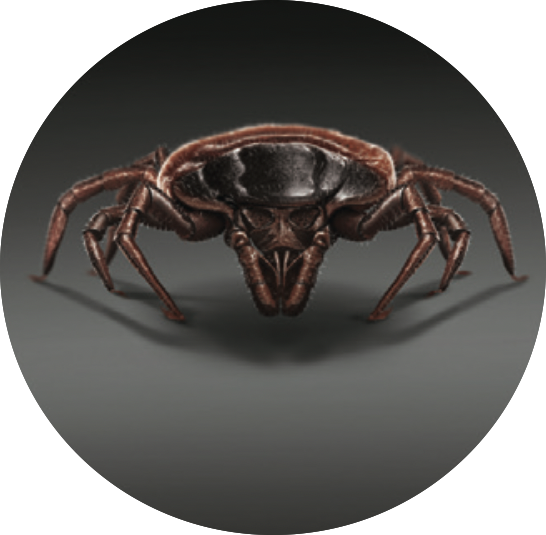
Ticks are a growing concern in the UK; due to both increasing tick numbers and increased exposure as more dogs and their humans head out to the great outdoors. Like fleas, they bite their host and feed on their blood. Traditionally thought to be most actively looking to feed in spring and autumn, recent data demonstrates that exposure in the summer is also a risk1.
The most common tick found on dogs in the UK is Ixodes ricinus or sheep tick2. Ticks feed not only on dogs but also on humans, and are capable of transmitting a number of other pathogens notably Borrelia burgdorferi, the bacteria responsible for Lyme’s disease.
When discussing tick control, there are three main areas to address.
1. Avoidance - Encourage owners to avoid any area known to have a high density of ticks during the spring to autumn months to reduce the risk of being exposed.
2. Removal - Highlight the benefits of checking dogs after a walk as this allows identification and swift removal. It is important to emphasise that all the mouthparts need to be removed; pur- pose-designed tick removal tools make this easy to do at home. Should owners be concerned about doing this, then assistance should be sought from their local veterinary practice.
3. Prevention - As with fleas, there is a range of authorised veter-inary medicines that can repel or kill ticks depending on their active ingredient. If there are cats in the household, bear in mind that some products authorised for use in dogs can be toxicto cats. So it is important the directions are clear about which species the product is for.
CHOOSING A PRODUCT TO PRESCRIBE
When discussing parasite control with owners, it is important to assess the risk of exposure for each dog to decide which products would offer appropriate cover, and how husbandry can be adapted to reduce risk. It is always important to choose products that work best for each individual dog’s lifestyle. As veterinary medicines
are strictly regulated, you can be confident of safety, quality and efficacy when prescribing an authorised medication (NOAH).
References
1. Wright, Ian, Benjamin Cull, Emma Gillingham, Kayleigh Hansford, and Jolyon Medlock. 2018. “Be tick aware: When and where to check cats and dogs for ticks.” Veterinary Record 182.
2. Abdullah, Swaid, Chris Helps, Severine Tasker, Hannah Newbury, and Richard Wall. 2016. “Ticks infesting domestic dogs in the UK: A large-scale surveillance programme.9. 10.1186/s13071-016-1673- 4.” Parasites & Vectors 9. NOAH. “Controls on veterinary medicines.” Controls on veterinary medicines. https://www.noah.co.uk/briefingdocument/controls-on- veterinary-medicines/.
| ABOUT THE AUTHOR Radley Edwards VetMB, MRCVS qualified from Cambridge University in 2010 before working in small animal practice for 10 years. He now works for leading animal health company Virbac as technical advisor. |

ETN’s series of CPD features helps RAMAs (Registered Animal Medicines Advisors/SQPs) earn the CPD (continuing professional development) points they need. The features are accredited by AMTRA, and highlight some of the most important subject areas for RAMAs/SQPs specialising in equine and companion animal medicine.
AMTRA is required by the Veterinary Medicines Regulations to ensure its RAMAs/SQPs undertake CPD. All RAMAs/SQPs must earn a certain number of CPD points in a given period of time in order to retain their qualification. RAMAs/SQPs who read this feature and submit correct answers to the questions below will receive two CPD points. For more about AMTRA and becoming a RAMA/SQP, visit www.amtra.org.uk











